Product Description
(100% Melaleuca viridiflora leaf)
Active ingredient – Methyl Cinnamate
Soothing fields of strawberries …
The first thing you’ll notice about Strawberry Bush Powder is the soothing strawberry scent.
This mildly strawberry flavoured powder would be a beautiful addition to your baking.
Additional Information
| Weight |
0.030 kg |
| Dimensions |
0.15 × 0.2 × 0.9 cm |
Safety Data Sheet
Curcumin SDS
Section 1: Chemical Product and Company Identification
Product Name: Curcumin
Catalogue Codes: SLC5503
CAS#: 458-37-7
RTECS: MI5230000
TSCA: TSCA 8(b) inventory: Curcumin
CI#: 75300
Synonym: Brilliant Yellow S; 1,7-Bis(4-hydroxy-3- methoxyphenyl)1,6-heptadiene-3,5-dione; Turmeric Yellow
Chemical Formula: C21H20O6
Contact Information:
CHEMTREC (24HR Emergency Telephone), call: 1-800-424-9300
International CHEMTREC, call: 1-703-527-3887
For non-emergency assistance, call: 1-281-441-4400
Section 2: Composition and Information on Ingredients
Composition:
Name CAS # % by Weight
Curcumin 458-37-7 100
Toxicological Data on Ingredients: Curcumin: ORAL (LD50): Acute: >2000 mg/kg [Rat]. >2000 mg/kg [Mouse].
Section 3: Hazards Identification
Potential Acute Health Effects:
Hazardous in case of eye contact (irritant), of ingestion. Slightly hazardous in case of skin contact (irritant), of inhalation.
Potential Chronic Health Effects:
CARCINOGENIC EFFECTS: Not available. MUTAGENIC EFFECTS: Mutagenic for mammalian somatic cells.
TERATOGENIC EFFECTS: Not available. DEVELOPMENTAL TOXICITY: Not available. Repeated or prolonged exposure is not known to aggravate medical condition.
Section 4: First Aid Measures
Eye Contact:
Check for and remove any contact lenses. In case of contact, immediately flush eyes with plenty of water for at least 15 minutes. Get medical attention.
Skin Contact: Wash with soap and water. Cover the irritated skin with an emollient. Get medical attention if irritation develops.
Serious Skin Contact: Not available.
Inhalation:
If inhaled, remove to fresh air. If not breathing, give artificial respiration. If breathing is difficult, give oxygen. Get medical attention.
Serious Inhalation: Not available.
Ingestion:
Do NOT induce vomiting unless directed to do so by medical personnel. Never give anything by mouth to an unconscious person. Loosen tight clothing such as a collar, tie, belt or waistband. Get medical attention if symptoms appear.
Serious Ingestion: Not available.
Section 5: Fire and Explosion Data
Flammability of the Product: May be combustible at high temperature.
Auto-Ignition Temperature: Not available.
Flash Points: Not available.
Flammable Limits: Not available.
Products of Combustion: These products are carbon oxides (CO, CO2).
Fire Hazards in Presence of Various Substances:
Slightly flammable to flammable in presence of open flames and sparks, of heat. Non-flammable in presence of shocks.
Explosion Hazards in Presence of Various Substances:
Risks of explosion of the product in presence of mechanical impact: Not available. Risks of explosion of the product in presence of static discharge: Not available.
Fire Fighting Media and Instructions:
SMALL FIRE: Use DRY chemical powder. LARGE FIRE: Use water spray, fog or foam. Do not use water jet.
Special Remarks on Fire Hazards: Not available.
Special Remarks on Explosion Hazards: Not available.
Section 6: Accidental Release Measures
Small Spill:
Use appropriate tools to put the spilled solid in a convenient waste disposal container. Finish cleaning by spreading water on the contaminated surface and dispose of according to local and regional authority requirements.
Large Spill:
Use a shovel to put the material into a convenient waste disposal container. Finish cleaning by spreading water on the contaminated surface and allow to evacuate through the sanitary system.
Section 7: Handling and Storage
Precautions:
Keep locked up. Keep away from heat. Keep away from sources of ignition. Empty containers pose a fire risk, evaporate the residue under a fume hood. Ground all equipment containing material. Do not ingest. Do not breathe dust. Avoid contact with eyes. Wear suitable protective clothing. If ingested, seek medical advice immediately and show the container or the label.
Keep away from incompatibles such as oxidizing agents.
Storage: Keep container tightly closed. Keep container in a cool, well-ventilated area. Do not store above 24°C (75.2°F).
Section 8: Exposure Controls/Personal Protection
Engineering Controls:
Use process enclosures, local exhaust ventilation, or other engineering controls to keep airborne levels below recommended exposure limits. If user operations generate dust, fume or mist, use ventilation to keep exposure to airborne contaminants below the exposure limit.
Personal Protection:
Splash goggles. Lab coat. Dust respirator. Be sure to use an approved/certified respirator or equivalent. Gloves.
Personal Protection in Case of a Large Spill:
Splash goggles. Full suit. Dust respirator. Boots. Gloves. A self-contained breathing apparatus should be used to avoid inhalation of the product. Suggested protective clothing might not be sufficient; consult a specialist BEFORE handling this product.
Exposure Limits: Not available.
Section 9: Physical and Chemical Properties
Physical state and appearance: Solid.
Odour: Not available.
Taste: Not available.
Molecular Weight: 368.39 g/mole
Colour: Orange. Orange-Yellow
pH (1% soln/water): Not applicable.
Boiling Point: Not available.
Melting Point: 183°C (361.4°F)
Critical Temperature: Not available.
Specific Gravity: <1 (Water = 1)
Vapour Pressure: Not applicable.
Vapour Density: 13 (Air = 1)
Volatility: Not available.
Odor Threshold: Not available.
Water/Oil Dist. Coeff.: Not available.
Ionicity (in Water): Not available.
Dispersion Properties: Not available.
Solubility:
Very slightly soluble in acetone. Insoluble in cold water, diethyl ether.
Section 10: Stability and Reactivity Data
Stability: The product is stable.
Instability Temperature: Not available.
Conditions of Instability: Excess heat, incompatible materials
Incompatibility with various substances: Reactive with oxidizing agents.
Corrosivity: Non-corrosive in presence of glass.
Special Remarks on Reactivity: Orange -Yellow turmeric will hold shade better than lemon-yellow when exposed directly or indirectly to sunlight.
Special Remarks on Corrosivity: Not available.
Polymerization: Will not occur.
Section 11: Toxicological Information
Routes of Entry: Inhalation. Ingestion.
Toxicity to Animals: Acute oral toxicity (LD50): >2000 mg/kg [Mouse].
Chronic Effects on Humans: MUTAGENIC EFFECTS: Mutagenic for mammalian somatic cells.
Other Toxic Effects on Humans:
Hazardous in case of ingestion. Slightly hazardous in case of skin contact (irritant), of inhalation.
Special Remarks on Toxicity to Animals: Not available.
Special Remarks on Chronic Effects on Humans:
May affect genetic material (mutagenic). It produced sister chromatid exchange in bone marrow of mice at 25 mg/kg, induced micronuclei at 73,600 mcg/L in a human embryo, and DNA inhibition in human HeLa cell [RTECS
Special Remarks on other Toxic Effects on Humans:
Acute Potential Health Effects: Skin: May cause skin irritation. No adverse effects expected. No information found on absorption through skin. Eyes: Dust may cause eye irritation. No adverse effects expected. Inhalation: Dust may cause respiratory tract irritation. No adverse effects expected. No information found on absorption through lungs. Ingestion:
Ingestion of small amounts during normal industrial handling is not likely to be harmful. Ingestion of large doses may cause gastrointestinal tract irritation (upset). It is poorly absorbed from the gut. Chronic Potential Health Effects: no information found other than it lowered serum and liver cholesterol levels in rats and that it may affect genetic material. The toxicological properties of this substance have not been fully investigated.
Section 12: Ecological Information
Ecotoxicity: Not available.
BOD5 and COD: Not available.
Products of Biodegradation:
Possibly hazardous short term degradation products are not likely. However, long term degradation products may arise.
Toxicity of the Products of Biodegradation: The product itself and its products of degradation are not toxic.
Special Remarks on the Products of Biodegradation: Not available.
Section 13: Disposal Considerations
Waste Disposal:
Waste must be disposed of in accordance with federal, state and local environmental control regulations.
Section 14: Transport Information
DOT Classification: Not a DOT controlled material (United States).
Identification: Not applicable.
Special Provisions for Transport: Not applicable.
Section 15: Other Regulatory Information
Federal and State Regulations: TSCA 8(b) inventory: Curcumin
Other Regulations: EINECS: This product is on the European Inventory of Existing Commercial Chemical Substances.
Other Classifications:
WHMIS (Canada): Not controlled under WHMIS (Canada).
DSCL (EEC):
R36- Irritating to eyes. R40- Possible risks of irreversible effects. S2- Keep out of the reach of children. S36/37- Wear suitable protective clothing and gloves. S46- If swallowed, seek medical advice immediately and show this container or label.
HMIS (U.S.A.):
Health Hazard: 2
Fire Hazard: 1
Reactivity: 0
Personal Protection: E
National Fire Protection Association (U.S.A.):
Health: 2
Flammability: 1
Reactivity: 0
Specific hazard:
Protective Equipment:
Gloves. Lab coat. Dust respirator. Be sure to use an approved/certified respirator or equivalent. Splash goggles.
Section 16: Other Information
References: Not available.
Other Special Considerations: Not available.
Created: 10/09/2005 05:02 PM
Last Updated: 05/21/2013 12:00 PM
The information above is believed to be accurate and represents the best information currently available to us. However, we make no warranty of merchantability or any other warranty, express or implied, with respect to such information, and we assume no liability resulting from its use. Users should make their own investigations to determine the suitability of the information for their particular purposes. In no event shall ScienceLab.com be liable for any claims, losses, or damages of any third party or for lost profits or any special, indirect, incidental, consequential or exemplary damages, howsoever arising, even if ScienceLab.com has been advised of the possibility of such damages.
Material Safety Data Sheet
Hibiscus sabdariffa leaf dried, crushed leaves of the Rosella, hibiscus sabdariffa l., malvaceous
Section 1: Chemical Product and Company Identification
Product Name: Rosella Spice Dried powder Contact Information:
Catalogue Code: EFTABRM002 Essences from the Australian Bush
94 Walkers Point Road.
CAS#: 84775-96-2 Maryborough
ECHA EC Number 283-920-7
RTECS: Not available. Queensland
TSCA 8(b) inventory: No products were found. Australia 4650
Order Online: www.essencesfromtheaustraianbush.com.au
CI#: Not available.
Synonym: Rosella Spice Powder Call 0408780709
Chemical Name: Hibiscus sabdariffa
Chemical Formula Moisture content 12.08, Ash content 7.5, Fat content 6.3, Crude protein 46.56, Crude fibre 12.04, Carbohydrate 15.79
Minerals
Calcium 110.16, Sodium 46.98 Iron 21.84, Zinc 15.43 Potassium 84.11. Magnesium 120.09, Phosphorus 36.91,
Manganese 6.14, Nickel 10.35, Copper 3.14
Section 2: Composition and Information on Ingredients
Composition:
Name CAS84775-96-2
100% by Weight
Hibiscus sabdariffa Leaf Powder
100
Toxicological Data on Ingredients: Not applicable.
Section 3: Hazards Identification
Potential Acute Health Effects:
Slightly hazardous in case of eye contact (irritant), of inhalation. Non-irritant for skin. Non-hazardous in case of ingestion.
Potential Chronic Health Effects:
CARCINOGENIC EFFECTS: Not available. MUTAGENIC EFFECTS: Not available. TERATOGENIC EFFECTS: Not available.
DEVELOPMENTAL TOXICITY: Not available. Repeated or prolonged exposure is not known to aggravate medical condition.
Section 4: First Aid Measures
Eye Contact:
Check for and remove any contact lenses. In case of contact, immediately flush eyes with plenty of water for at least 15 minutes. Get medical attention if irritation occurs.
Skin Contact: Wash with soap and water. Get medical attention if irritation develops.
Serious Skin Contact: Not available.
Inhalation:
If inhaled, remove to fresh air. If not breathing, give artificial respiration. If breathing is difficult, give oxygen. Get medical attention.
Serious Inhalation: Not available.
Ingestion:
Do NOT induce vomiting unless directed to do so by medical personnel. Never give anything by mouth to an unconscious person. If large quantities of this material are swallowed, call a physician immediately. Loosen tight clothing such as a collar, tie, belt or waistband.
Serious Ingestion: Not available.
Section 5: Fire and Explosion Data
Flammability of the Product: May be combustible at high temperature.
Auto-Ignition Temperature: Not available.
Flash Points: Not available.
Flammable Limits: Not available.
Products of Combustion: Not available.
Fire Hazards in Presence of Various Substances:
Slightly flammable to flammable in presence of open flames and sparks, of heat. Non-flammable in presence of shocks.
Explosion Hazards in Presence of Various Substances:
Risks of explosion of the product in presence of mechanical impact: Not available. Risks of explosion of the product in presence of static discharge: Not available.
Fire Fighting Media and Instructions:
SMALL FIRE: Use DRY chemical powder. LARGE FIRE: Use water spray, fog or foam. Do not use water jet.
Special Remarks on Fire Hazards: Not available.
Special Remarks on Explosion Hazards: Organic dusts can form explosive mixtures in air.
Section 6: Accidental Release Measures
Small Spill:
Use appropriate tools to put the spilled solid in a convenient waste disposal container. Finish cleaning by spreading water on the contaminated surface and dispose of according to local and regional authority requirements.
Large Spill:
Use a shovel to put the material into a convenient waste disposal container. Finish cleaning by spreading water on the contaminated surface and allow to evacuate through the sanitary system.
Section 7: Handling and Storage
Precautions:
Keep away from heat. Keep away from sources of ignition. Empty containers pose a fire risk, evaporate the residue under a fume hood. Ground all equipment containing material. Do not breathe dust.
Storage: Keep container tightly closed. Keep container in a cool, well-ventilated area. Do not store above 24°C (75.2°F).
Section 8: Exposure Controls/Personal Protection
Engineering Controls:
Use process enclosures, local exhaust ventilation, or other engineering controls to keep airborne levels below recommended exposure limits. If user operations generate dust, fume or mist, use ventilation to keep exposure to airborne contaminants below the exposure limit.
Personal Protection: Safety glasses. Lab coat.
Personal Protection in Case of a Large Spill:
Splash goggles. Full suit. Boots. Gloves. Suggested protective clothing might not be sufficient; consult a specialist BEFORE handling this product.
Exposure Limits: Not available.
Section 9: Physical and Chemical Properties
Physical state and appearance: Solid. (Powdered solid.)
Odor: Sorrel like.
Taste: Sorrel like
Molecular Weight: Not available.
Color: Green yellow grey.
pH (1% soln/water): Not available.
Boiling Point: Not available.
Melting Point: Not available.
Critical Temperature: Not available.
Specific Gravity: Not available.
Vapor Pressure: Not applicable.
Vapor Density: Not available.
Volatility: Not available.
Odor Threshold: Not available.
Water/Oil Dist. Coeff.: Not available.
Ionicity (in Water): Not available.
Dispersion Properties: Not available.
Solubility: Not available.
Section 10: Stability and Reactivity Data
Stability: The product is stable.
Instability Temperature: Not available.
Conditions of Instability: Excess heat, incompatible materials
Incompatibility with various substances: Not available.
Corrosivity: Not available.
Special Remarks on Reactivity: No information available at this time.
Special Remarks on Corrosivity: Not available.
Polymerization: Will not occur.
Section 11: Toxicological Information
Routes of Entry: Inhalation. Ingestion.
Toxicity to Animals:
LD50: Not available. LC50: Not available.
Chronic Effects on Humans: Not available.
Other Toxic Effects on Humans:
Slightly hazardous in case of inhalation. Non-irritant for skin. Non-hazardous in case of ingestion.
Special Remarks on Toxicity to Animals: Not available.
Special Remarks on Chronic Effects on Humans: Not available.
Special Remarks on other Toxic Effects on Humans:
Acute Potential Health Effects: Skin: Unlikely to cause skin irritation. Eyes: Dust may cause eye irritation. Ingestion:
Swallowing this material during normal handling is not likely to be harmful. Inhalation: This material may produce dust. May cause respiratory tract irritation. Breathing small amounts of this material during normal handling is not likely to be harmful.
Section 12: Ecological Information
Ecotoxicity: Not available.
BOD5 and COD: Not available.
Products of Biodegradation:
Possibly hazardous short term degradation products are not likely. However, long term degradation products may arise.
Toxicity of the Products of Biodegradation: Not available.
Special Remarks on the Products of Biodegradation: Not available.
Section 13: Disposal Considerations
Waste Disposal:
Waste must be disposed of in accordance with federal, state and local environmental control regulations.
Section 14: Transport Information
Transport Classification: Not a controlled material (Australia).
Identification: Not applicable.
Special Provisions for Transport: Not applicable.
Section 15: Other Regulatory Information
Federal and State Regulations: No products were found.
Other Regulations: Not available.
Other Classifications:
WHMIS (Canada): Not controlled under WHMIS (Canada).
DSCL (EEC):
This product is not classified according to the EU regulations. Not applicable.
HMIS (U.S.A.):
Health Hazard: 1
Fire Hazard: 1
Reactivity: 0
Personal Protection: a
National Fire Protection Association (U.S.A.):
Health: 1
Flammability: 1
Reactivity: 0 Specific hazard:
Protective Equipment:
Not applicable. Lab coat. Not applicable. Safety glasses.
Section 16: Other Information
References: Not available.
Other Special Considerations: Not available.
Created: 10/10/2005 11:14 AM
Last Updated: 05/21/2013 12:00 PM
The information above is believed to be accurate and represents the best information currently available to us. However, we make no warranty of merchantability or any other warranty, express or implied, with respect to such information, and we assume no liability resulting from its use. Users should make their own investigations to determine the suitability of the information for their particular purposes. In no event shall ScienceLab.com be liable for any claims, losses, or damages of any third party or for lost profits or any special, indirect, incidental, consequential or exemplary damages, howsoever arising, even if Essences from the Australian Bush has been advised of the possibility of such damages.
River Mint (Mentha australia) Leaf Powder - SDS
Section 1: Chemical Product and Company Identification
Product Name: River Mint Leaf Powder Contact Information:
Catalogue Code: EFTABRM002 Essences from the Australian Bush
P.O.Box 3066, Pallas Street, Maryborough Qld 4650
CAS#: Not available Order Online: www.essencesfromtheaustraianbush.com.au
RTECS: Not available.
TSCA 8(b) inventory: No products were found.
CI#: Not available.
Synonym: River Mint Powder Call 0408780709
Chemical Name: Mentha Australis
Chemical Formula: Major compounds identified in the extract were rosmarinic acid (160.4 ± 0.85 μg mg(-1)purified extract), neoponcirin (145.0 ± 0.42 μg gallic acid equivalent(GAE) mg(-1)), narirutin (30.3 ± 0.02 μg GAE mg(-1)), chlorogenic acid (15.4 ± 0.05 μg mg(-1)) and biochanin A (9.6 ± 0.06 μg GAE mg(-1)), while minor compounds were caffeic acid, apigenin, hesperetin and naringenin. Neoponcirin and biochanin A were identified for the first time in the Mentha genus.
https://www.ncbi.nlm.nih.gov/pubmed/26304400
Section 2: Composition and Information on Ingredients
Composition:
Name CAS # % by Weight
River Mint Leaf Powder 100
Toxicological Data on Ingredients: Not applicable.
Section 3: Hazards Identification
Potential Acute Health Effects:
Slightly hazardous in case of eye contact (irritant), of inhalation. Non-irritant for skin. Non-hazardous in case of ingestion.
Potential Chronic Health Effects:
CARCINOGENIC EFFECTS: Not available. MUTAGENIC EFFECTS: Not available. TERATOGENIC EFFECTS: Not available.
DEVELOPMENTAL TOXICITY: Not available. Repeated or prolonged exposure is not known to aggravate medical condition.
Section 4: First Aid Measures
Eye Contact:
Check for and remove any contact lenses. In case of contact, immediately flush eyes with plenty of water for at least 15 minutes. Get medical attention if irritation occurs.
Skin Contact: Wash with soap and water. Get medical attention if irritation develops.
Serious Skin Contact: Not available.
Inhalation:
If inhaled, remove to fresh air. If not breathing, give artificial respiration. If breathing is difficult, give oxygen. Get medical attention.
Serious Inhalation: Not available.
Ingestion:
Do NOT induce vomiting unless directed to do so by medical personnel. Never give anything by mouth to an unconscious person. If large quantities of this material are swallowed, call a physician immediately. Loosen tight clothing such as a collar, tie, belt or waistband.
Serious Ingestion: Not available.
Section 5: Fire and Explosion Data
Flammability of the Product: May be combustible at high temperature.
Auto-Ignition Temperature: Not available.
Flash Points: Not available.
Flammable Limits: Not available.
Products of Combustion: Not available.
Fire Hazards in Presence of Various Substances:
Slightly flammable to flammable in presence of open flames and sparks, of heat. Non-flammable in presence of shocks.
Explosion Hazards in Presence of Various Substances:
Risks of explosion of the product in presence of mechanical impact: Not available. Risks of explosion of the product in presence of static discharge: Not available.
Fire Fighting Media and Instructions:
SMALL FIRE: Use DRY chemical powder. LARGE FIRE: Use water spray, fog or foam. Do not use water jet.
Special Remarks on Fire Hazards: Not available.
Special Remarks on Explosion Hazards: Organic dusts can form explosive mixtures in air.
Section 6: Accidental Release Measures
Small Spill:
Use appropriate tools to put the spilled solid in a convenient waste disposal container. Finish cleaning by spreading water on the contaminated surface and dispose of according to local and regional authority requirements.
Large Spill:
Use a shovel to put the material into a convenient waste disposal container. Finish cleaning by spreading water on the contaminated surface and allow to evacuate through the sanitary system.
Section 7: Handling and Storage
Precautions:
Keep away from heat. Keep away from sources of ignition. Empty containers pose a fire risk, evaporate the residue under a fume hood. Ground all equipment containing material. Do not breathe dust.
Storage: Keep container tightly closed. Keep container in a cool, well-ventilated area. Do not store above 24°C (75.2°F).
Section 8: Exposure Controls/Personal Protection
Engineering Controls:
Use process enclosures, local exhaust ventilation, or other engineering controls to keep airborne levels below recommended exposure limits. If user operations generate dust, fume or mist, use ventilation to keep exposure to airborne contaminants below the exposure limit.
Personal Protection: Safety glasses. Lab coat.
Personal Protection in Case of a Large Spill:
Splash goggles. Full suit. Boots. Gloves. Suggested protective clothing might not be sufficient; consult a specialist BEFORE handling this product.
Exposure Limits: Not available.
Section 9: Physical and Chemical Properties
Physical state and appearance: Solid. (Powdered solid.)
Odour: Characteristic.
Taste: Not available.
Molecular Weight: Not available.
Colour: Green.
pH (1% soln/water): Not available.
Boiling Point: Not available.
Melting Point: Not available.
Critical Temperature: Not available.
Specific Gravity: Not available.
Vapour Pressure: Not applicable.
Vapour Density: Not available.
Volatility: Not available.
Odour Threshold: Not available.
Water/Oil Dist. Coeff.: Not available.
Ionicity (in Water): Not available.
Dispersion Properties: Not available.
Solubility: Not available.
Section 10: Stability and Reactivity Data
Stability: The product is stable.
Instability Temperature: Not available.
Conditions of Instability: Excess heat, incompatible materials
Incompatibility with various substances: Not available.
Corrosivity: Not available.
Special Remarks on Reactivity: No information available at this time.
Special Remarks on Corrosivity: Not available.
Polymerization: Will not occur.
Section 11: Toxicological Information
Routes of Entry: Inhalation. Ingestion.
Toxicity to Animals:
LD50: Not available. LC50: Not available.
Chronic Effects on Humans: Not available.
Other Toxic Effects on Humans:
Slightly hazardous in case of inhalation. Non-irritant for skin. Non-hazardous in case of ingestion.
Special Remarks on Toxicity to Animals: Not available.
Special Remarks on Chronic Effects on Humans: Not available.
Special Remarks on other Toxic Effects on Humans:
Acute Potential Health Effects: Skin: Unlikely to cause skin irritation. Eyes: Dust may cause eye irritation. Ingestion:
Swallowing this material during normal handling is not likely to be harmful. Inhalation: This material may produce dust. May cause respiratory tract irritation. Breathing small amounts of this material during normal handling is not likely to be harmful.
Section 12: Ecological Information
Ecotoxicity: Not available.
BOD5 and COD: Not available.
Products of Biodegradation:
Possibly hazardous short term degradation products are not likely. However, long term degradation products may arise.
Toxicity of the Products of Biodegradation: Not available.
Special Remarks on the Products of Biodegradation: Not available.
Section 13: Disposal Considerations
Waste Disposal:
Waste must be disposed of in accordance with federal, state and local environmental control regulations.
Section 14: Transport Information
Transport Classification: Not a controlled material (Australia).
Identification: Not applicable.
Special Provisions for Transport: Not applicable.
Section 15: Other Regulatory Information
Federal and State Regulations: No products were found.
Other Regulations: Not available.
Other Classifications:
WHMIS (Canada): Not controlled under WHMIS (Canada).
DSCL (EEC):
This product is not classified according to the EU regulations. Not applicable.
HMIS (U.S.A.):
Health Hazard: 1
Fire Hazard: 1
Reactivity: 0
Personal Protection: a
National Fire Protection Association (U.S.A.):
Health: 1
Flammability: 1
Reactivity: 0 Specific hazard:
Protective Equipment:
Not applicable. Lab coat. Not applicable. Safety glasses.
Section 16: Other Information
References: Not available.
Other Special Considerations: Not available.
Created: 10/10/2005 11:14 AM
Last Updated: 05/21/2013 12:00 PM
Disclaimer: The information above is believed to be accurate and represents the best information currently available to us. However, we make no warranty of merchantability or any other warranty, express or implied, with respect to such information, and we assume no liability resulting from its use. Users should make their own investigations to determine the suitability of the information for their particular purposes. In no event shall ScienceLab.com be liable for any claims, losses, or damages of any third party or for lost profits or any special, indirect, incidental, consequential or exemplary damages, howsoever arising, even if Essences from the Australian Bush has been advised of the possibility of such damages.
MATERIAL SAFETY DATA SHEET
MSDS: Tea Tree Essential Oil
SECTION: 1.1 PRODUCT IDENTIFICATION
Product Name: Tea Tree Essential Oil
Botanical Name: Melaleuca alternifolia
Recommended Use: Raw material
INCI Name: Melaleuca alternifolia (tea tree) leaf oil
CAS #: 85085-48-9
Country of Origin: Australia
SECTION: 1.2 COMPANY IDENTIFICATION
Company: Essences from the Australian Bush
Address: P.O. 3066, Pallas Street, Maryborough. QLD. Australia
Telephone No: 0408780709
24 HOUR EMERGENCY TELEPHONE NUMBER: 000
SECTION: 2. COMPOSITION / INFORMATION INGREDIENTS
CAS No.: EINECS No.: Range
85085-18-9 285-377-1 Melaleuca alternifolia, ext. 100%
SECTION: 3. HAZARDS IDENTIFICATION
According to the criteria of NOHSC, this material is classified as; Hazardous Substance, Dangerous Goods
Risk Phrases:
Flammable. Harmful if swallowed. Irritating to skin. May cause Sensitisation by skin contact. Toxic to Aquatic
Organisms. May cause lung damage if swallowed.
Safety Phrases:
Avoid contact with skin. In case of contact with eyes, rinse immediately with plenty of water and contact a doctor
or Poisons Information Centre. After contact with skin, wash immediately with plenty of soap and water. Wear suitable gloves. Wear eye/face protection. Avoid release to the environment. Refer to special instructions/safety data sheets. If swallowed, do not induce vomiting: seek medical advice immediately and show this container or label.
Poisons Schedule: S6
SECTION: 4. FIRST AID MEASURES
Eye Contact: Contact with eyes can produce burning sensation. Irrigate with water immediately, continue flushing eyes with water for 15 minutes. Seek medical attention if irritation persists.
Inhalation: Remove to fresh air. Give oxygen if breathing is laboured and seek medical advice. Avoid casual breathing. Signs of over exposure are dizziness and nausea.
Ingestion:
Rinse mouth; dilute with milk or water and consult a physician immediately. Do not induce vomiting. Never-give anything by mouth if victim is unconscious, is rapidly-losing or is
Convulsing.
Skin Contact: Skin contact can produce irritation, or itching of the skin. Remove contaminated clothing
Wash with soap and plenty of water. Seek medical attention if irritation persists. MATERIAL SAFETY DATA SHEET
MSDS: Tea Tree Essential Oil (Australia)
SECTION: 5. FIRE FIGHTING MEASURES
Flash Point: Flash Point: 47 °C (closed cup)
Extinguishing media: Carbon Dioxide, dry chemical or foam. Closed containers may build up pressure at elevated temperature
Special Procedures:
Determine the need to evacuate or isolate the area according to your local emergency plan.
Unusual Firefighting Hazards: None identified.
Protective Equipment: Self-contained breathing apparatus and protective clothing should be worn when fighting fires involving essential oils or chemicals.
Combustion Product: Carbon Monoxide, Carbon Dioxide
SECTION: 6. ACCIDENTAL RELEASE MEASURES
Personal Precautions: Use of self-contained breathing apparatus is recommended for any major chemical spill. Refer also to section 8.
Safety Precautions: Eliminate all ignition sources. Ventilate area. Determine the need to
Evacuate or isolate the area according to your local emergency plan.
Environmental Precautions: Keep away from drains, surface and ground water. Report spills to appropriate Authorities if required.
Methods for Cleaning Up:
Contain and collect with inert absorbent material and place in suitable container for disposal. Comply with all federal, state, and local regulation.
Wipe small spills with cloth. Clean with hot water and detergent.
SECTION: 7. HANDLING AND STORAGE
Handling:
Avoid inhalation and contact with skin and eyes. Good personal hygiene practices should be used. Wash after any contact, before breaks and meals, and at the end of the work period. Contaminated clothing and shoes should be cleaned before re-use.
Storage:
Containers should be kept closed in order to minimize contamination.
Store in a cool, dry, well ventilated place protected from light.
Keep away from extreme heat and from freezing conditions and away from all sources of ignition
Make sure the material does not come into contact with substances listed as: “Materials to Avoid”.
SECTION: 8. EXPOSURE CONTROLS AND PERSONAL PROTECTION
Eyes Protection: The use of safety glasses is recommended. If a material is to be handled in a manner where splashing may occur, the use of splash goggles or face shield is recommended
Respiratory Protection:
In well- ventilated areas, respiratory protection is not normally required. In confined, poorly ventilated areas the use of "NIOSH" approved respiratory protection normally required (use only if trained in proper use and with acceptable oxygen level).
Protective Gloves: Using chemical resistant gloves is recommended.
Protective Clothing: Using chemical resistant clothing is recommended.
Protective Equipment: An eyewash fountain and / or safety shower should be available in the work area. Acceptable industrial hygiene practices should be maintained. MATERIAL SAFETY DATA SHEET
MSDS: Tea Tree Essential Oil (Australia)
Note: These precautions are for room temperature handling. Use at elevated temperature or aerosol / spray applications may require additional precautions
SECTION: 9. PHYSICAL AND CHEMICAL PROPERTIES
Appearance: Colourless to pale yellow clear liquid.
Odour: Characteristic warm, spicy odour.
Solubility: Soluble in alcohol and oils. Insoluble in water.
Specific Gravity: 0.880 – 0.906 @ 20°C
Optical Rotation: +5.0 – +15 @ 20°C
Refractive Index: 1.4750 – 1.4820 @ 20°C
Extraction Method: Steam distillation of the fresh leaves.
Contents: Terpinen-4-ol, cineol, terpinene, Pinene, Sabine, Cymene, limonene,
Terpinolene, Terpineol, Aromadendrene, Cadinene, Globulol, Viridiflorol.
SECTION: 10. STABILITY AND REACTIVITY
Stability: Chemically stable.
This material presents no significant reactivity hazard.
Conditions to Avoid: Avoid sparks, flame and excessive heat.
Materials to Avoid: Strong oxidizing agents.
Flammability: Flammable liquid.
Hazardous Polymerization: Will not occur.
Hazardous Combustion or None known.
Decomposition Products: When heated to decomposition produces acid fumes and carbon monoxide smoke.
SECTION: 11. TOXICOLOGICAL INFORMATION
Inhalation:
Inhalation of high concentrations of vapour may result in irritation of eyes, nose and throat, headache, nausea, and dizziness.
Skin Contact:
Repeated or prolonged contact of full strength product can cause redness, irritation and scaling of skin. Adverse skin effects should be prevented by normal care and personal hygiene
Eye Contact: May irritate eyes.
Ingestion:
Low order toxicity causing irritation of the mouth, stomach and intestines which results in nausea and vomiting.
Medical Conditions Aggravated by Exposure: May aggravate dermatitis, psoriasis and other skin conditions.
Chronic Toxicity: May cause allergic reactions on skin
Carcinogenicity Data: None of the components of this material are listed as a carcinogen.
Reproductive Toxicity: No adverse effects on reproduction are known.
Acute Toxicity Values: No data is currently available. MATERIAL SAFETY DATA SHEET
MSDS: Tea Tree Essential Oil (Australia)
SECTION: 12. ECOLOGICAL INFORMATION
Toxic to aquatic organism may cause long-term adverse effects in the aquatic environment.
Avoid any pollution of ground, surface or underground water.
SECTION: 13. DISPOSAL CONSIDERATION
Incineration or sanitary landfill in accordance with local, provincial and federal regulations. Check with disposal expert to insure compliance
SECTION: 14. TRANSPORT INFORMATION
UN No. 2319: Terpene hydrocarbons, NOS
Packaging Group: III Class: 3 - Flammable Liquid Hazchem Code: 3Y
Sea Freight:: Reference P 3383 of IMDG Code.
SECTION: 15. REGULATORY INFORMATION
WHMIS (Canada): D2B, B3
EU Labelling: R10 Flammable.
Xn R22 Harmful if swallowed.
Xi R38 Irritating to skin
S36/37/38 Wear suitable protective clothing, gloves and eye/face protection
DISCLAIMER: This information relates only to the specific material designated and may not be valid for such material used in combination with any other materials or in any process. Such information is, to the best of the company's knowledge and belief, accurate and reliable as of the date indicated. However, no warranty guarantee or representation is made to its accuracy, reliability or completeness. It is the user’s responsibility to satisfy himself as to the suitability of such information for his own particular use.
Lemon Tea Tree (Leptospermum petersonii) Essential Oil - SDS
LEMON TEA TREE ESSENTIAL OIL
SAFETY DATA SHEET (SDS)
Date: April 2018
1. Product and Supplier Description
Trade Name: Lemon Scented Tea Tree
INCI Name: Leptospermum Petersonii Oil
Supplier:
Essences from the Australian Bush
P.O.Box 3066, Pallas Street
Maryborough, QLD, 4650
Australia
Phone 0408780709
2.Hazards Identification
Xn Harmful; R10 Flammable liquid
3.Composition and Ingredient Information
CAS Number: 85085-43-4
EINECS Number: -
NIOSH #: -
FEMA: -
Tariff No: 3301 29 6100
Concentrated product for manufacturing use only.
4.First Aid Measures
Inhalation: Remove to fresh air and obtain help from a physician.
Skin Contact: Wash thoroughly with soap and water. Remove contaminated clothing. If irritation persists, or tissue damage is evident, seek medical advice.
Ingestion: Rinse mouth with water. Obtain medical advice. Do not induce vomiting.
Eyes: Remove contact lenses and wash eyes by normal first aid methods. Get Medical aid. Material Safety Data Sheet. Doc 2
5.Fire Fighting Measures
Extinguishing Media: Dry chemical, foam, and CO2 gas. Water Fog.
Special Exposure Hazards: Sealed containers may build up pressure and release combustible material to the fire. Water may be used to cool unbroken containers exposed to heat.
Decomposition Products: Burning may generate CO, CO2, acrid smoke and fumes, as well as other unidentified hazardous organic compounds. Avoid inhaling fumes.
Special Protective Equipment: Self-contained breathing apparatus and protective clothing.
Further Information: Material is not pyrophoric. Remove spilled material and contaminated clothing and destroy according to local regulations.
6.Measures in case of accidental release
Personal Protection: Provide proper ventilation. Avoid inhalation and contact with skin and eyes.
Environmental Protection: Dispose of in accordance with local regulations.
Methods of Cleaning/Disposal: Absorb the material on an inert material such as earth, sand or vermiculite. Wash area with a strong, biodegradable soap solution, and rinse to drain. Products will degrade in sewerage system.
7.Handling and Storage
Handling: Avoid splashes. Treat containers with respect to avoid damage. Allow adequate ventilation in use. Keep air contact to a minimum. Protect from fire and sources of ignition.
Storage: Store in full, tightly sealed original containers in a cool, dry, well-ventilated place. Protect from light. Avoid extremes of temperature.
Observe Good Manufacturing Practices.
8.Exposure Controls/Personal Protection
Exposure Controls: Minimize release of product to working atmosphere. Local exhaust ventilation is recommended. Avoid maintaining temperatures above flash point. Avoid static discharge and all other sources of ignition. Use spark-proof electrical equipment.
Respiratory Protection: No special Measures under normal use.
Hand Protection: Chemically resistant gloves (Butyl- or fluoro – rubber)
Eye Protection: Face shield or chemical safety goggles.
General Protection: Overalls with protection to arms.
9.Physical and Chemical Properties
Physical State: Mobile liquid
Colour: Clear to pale yellow liquid
Odour: Strong lemon
Evaporat ion rate: Slow
Flash Point: 57 ˚C
10.Stability and Reactivity
Normally stable. Does not react to water.
Thermal Decomposition: None identified
Hazardous Reactions: None known Material Safety Data Sheet. Doc 3
Hazardous Decomposition Products: None known
11.Toxicological Information
The toxicological properties of this material have not been fully investigated and therefore not all data is available. Acute exposure may however cause headache, nausea and vomiting. The product may be harmful by inhalation, ingestion and absorption.
Carcinogenicity (risk of cancer): No.
Teratogenicity (risk of malformation in unborn foetus): Not established.
Reproductive Toxicity (risk of sterility): Not established.
Mutagenicity (risk of heritable genetic effects): Not established.
Exposure Limit Value: Not established.
12.Ecological Information
This material is a complex mixture obtained from a natural plant.
13.Disposal Considerations
Disposal should be in accordance with current international, national and local regulations.
14.Transport Information
14.1 UN Classification
Class 3.3, Combustible Liquid, UN No 1169
14.2 Shipping Name
Extract, Aromatic, Liquid UN 1169 Class 3.3
14.3 Hazard Label
Combustible Liquid Class 111
14.4 Packing Instructions
Packing Group 111; Subsidiary risks – nil;
Tape all seems on the carton; orientation arrow is required.
14.5 DOT Hazard Classification
None
15.Regulatory Information
EEC Directives
Risk Phrases: R36/37/38/44
Safety Phrases: S2/7/15/24/25/26/41/43
16.Other Information
Disclaimer: The information above is believed to be accurate and represents the best information currently available to us. However, we make no warranty of merchantability or any other warranty, express or implied, with respect to such information, and we assume no liability resulting from its use. Users should make their own investigations to determine the suitability of the information for their particular purposes. In no event shall Essences from the Australian Bush be liable for any claims, losses, or damages of any third party or for lost profits or any special, indirect, incidental, consequential or exemplary damages, howsoever arising, even if Essences from the Australian Bush has been advised of the possibility of such damages.
Lemon Myrtle (Backhousia citriodora) Essential Oil - SDS
LEMON MYRTLE ESSENTIAL OIL
SAFETY DATA SHEET (SDS)
1. IDENTIFICATION OF THE MATERIAL AND SUPPLIER
Other name(s): Oil of Backhousia citriodora
Recommended Use of the Chemical and Restrictions on Use
Germicide. Flavours and perfumes.
Supplier Essences from the Australian Bush
P.O.Box 3066, Pallas Street
Maryborough
QLD
Australia
Telephone Number: 0408780709
Emergency Telephone: 000 (ALL HOURS)
Please ensure you refer to the limitations of this Safety Data Sheet as set out in the "Other Information" section at the end of this Data Sheet.
2. HAZARDS IDENTIFICATION
Not classified as Dangerous Goods by the criteria of the Australian Dangerous Goods Code (ADG Code) for transport by Road and Rail; NON-DANGEROUS GOODS.
This material is hazardous according to Safe Work Australia; HAZARDOUS SUBSTANCE.
SIGNAL WORD: HAZARDOUS
Poisons Schedule (SUSMP): None allocated.
3. COMPOSITION AND INFORMATION ON INGREDIENTS
Components CAS Number Proportion Hazard Codes
Citral 5392-40-5 90-95% H315 H317 H401
Product Name: LEMON MYRTLE OIL
4. FIRST AID MEASURES
Issued: 11/10/2011
Substance No: 000000025165
For advice, contact a Poisons Information Centre (e.g. phone Australia 131 126; New Zealand 0800 764 766) or a doctor.
Version: 1
Inhalation:
Remove victim from area of exposure - avoid becoming a casualty. Remove contaminated clothing and loosen remaining clothing. Allow patient to assume most comfortable position and keep warm. Keep at rest until fully recovered. Seek medical advice if effects persist.
Skin Contact:
If skin or hair contact occurs, immediately remove any contaminated clothing and wash skin and hair thoroughly with running water and soap. If swelling, redness, blistering or irritation occurs seek medical assistance.
Eye Contact:
If in eyes, wash out immediately with water. In all cases of eye contamination it is a sensible precaution to seek medical advice.
Ingestion:
Rinse mouth with water. If swallowed, do NOT induce vomiting. Give a glass of water. Seek medical assistance.
Indication of immediate medical attention and special treatment needed:
Treat symptomatically.
5. FIRE FIGHTING MEASURES
Suitable Extinguishing Media:
Fine water spray, normal foam, dry agent (carbon dioxide, dry chemical powder).
Specific hazards arising from the substance or mixture:
Combustible liquid.
Special protective equipment and precautions for fire-fighters:
On burning will emit toxic fumes, including those of oxides of carbon. Keep containers cool with water spray. Fire fighters to wear self-contained breathing apparatus and suitable protective clothing if risk of exposure to vapour or products of combustion.
6. ACCIDENTAL RELEASE MEASURES
Emergency procedures/Environmental precautions:
If contamination of sewers or waterways has occurred advise local emergency services.
Personal precautions/Protective equipment/Methods and materials for containment and cleaning up:
Slippery when spilt. Avoid accidents, clean up immediately. Wear protective equipment to prevent skin and eye contact and breathing in vapours. Contain - prevent run off into drains and waterways. Use absorbent (soil, sand or other inert material). Collect and seal in properly labelled containers or drums for disposal. Wash area down with detergent and excess water.
7. HANDLING AND STORAGE
Substance No: 000000025165
Classified as a C1 (COMBUSTIBLE LIQUID) for the purpose of storage and handling, in accordance with the requirements of AS 1940. Refer to State Regulations for storage and transport requirements.
Version: 1
Precautions for safe handling:
Avoid skin and eye contact and breathing in vapour, mists and aerosols.
Conditions for safe storage, including any incompatibilities:
Store in a cool, dry, well ventilated place and out of direct sunlight. Store away from sources of heat or ignition. Store away from incompatible materials described in Section 10. Keep containers closed when not in use - check regularly or leaks.
8. EXPOSURE CONTROLS/PERSONAL PROTECTION
Control Parameters: No value assigned for this specific material by Safe Work Australia.
Appropriate engineering controls:
Use in well ventilated areas. If inhalation risk exists: Use with local exhaust ventilation or while wearing organic vapour/particulate respirator. Keep containers closed when not in use.
Vapour heavier than air - prevent concentration in hollows or sumps. DO NOT enter confined spaces where vapour may have collected.
Individual protection measures, such as Personal Protective Equipment (PPE):
The selection of PPE is dependent on a detailed risk assessment. The risk assessment should consider the work situation, the physical form of the chemical, the handling methods, and environmental factors.
OVERALLS, SAFETY SHOES, SAFETY GLASSES, GLOVES.
Wear overalls, safety glasses and impervious gloves. If determined by a risk assessment an inhalation risk exists, wear an organic vapour/particulate respirator meeting the requirements of AS/NZS 1715 and AS/NZS 1716.
Always wash hands before smoking, eating, drinking or using the toilet. Wash contaminated clothing and other protective equipment before storage or re-use.
9. PHYSICAL AND CHEMICAL PROPERTIES
Physical state: Clear Liquid
Colour: Colourless to Pale Yellow
Odour: Characteristic
Solubility: Insoluble in water.
Specific Gravity: 0.88-0.91 @ 20°C
Relative Vapour Density (air=1): Not available
Vapour Pressure (20 °C): Not available
Flash Point (°C): 82-86
Flammability Limits (%): Not available
Auto ignition Temperature (°C): Not available
Melting Point/Range (°C):
Boiling Point/Range (°C): Not available
Decomposition Point (°C): Not available
PH: Not applicable
Viscosity: Not available
Product Name: LEMON MYRTLE OIL
Evaporation Rate:
Issued: 11/10/2011
Not available
10. STABILITY AND REACTIVITY
Version: 1
Chemical stability: Stable under normal conditions of use.
Possibility of hazardous reactions:
Hazardous polymerisation will not occur.
Conditions to avoid: Avoid exposure to heat, sources of ignition, and open flame.
Incompatible materials: Incompatible with acids, alkalis and oxidising agents.
Hazardous decomposition products:
Oxides of carbon.
11. TOXICOLOGICAL INFORMATION
No adverse health effects expected if the product is handled in accordance with this Safety Data Sheet and the product label. Symptoms or effects that may arise if the product is mishandled and overexposure occurs are:
Ingestion: No adverse effects expected, however, large amounts may cause nausea and vomiting.
Eye contact: May be an eye irritant.
Skin contact: Contact with skin will result in irritation. A skin sensitiser. Repeated or prolonged skin contact may lead to allergic contact dermatitis. Will have a degreasing action on the skin. Repeated or prolonged skin contact may lead to irritant contact dermatitis.
Inhalation: Breathing in vapour, mists or aerosols may produce respiratory irritation.
Acute toxicity:
Oral LD50 (rat): 4960 mg/kg (1)
Dermal LD50 (rabbit): >2250 mg/kg (1)
Chronic effects: Non-mutagenic in AMES test. (1)
12. ECOLOGICAL INFORMATION
Eco toxicity Avoid contaminating waterways.
Persistence/degradability: The material is readily biodegradable. (1)
Aquatic toxicity:
96hr LC50 (fish): >100 mg/L (1)
Product Name: LEMON MYRTLE OIL
13. DISPOSAL CONSIDERATIONS
Issued: 11/10/2011
Disposal methods:
Refer to Waste Management Authority. Dispose of contents/container in accordance with
Local/regional/national/international regulations.
14.TRANSPORT INFORMATION
Road and Rail Transport
Not classified as Dangerous Goods by the criteria of the Australian Dangerous Goods Code (ADG Code) for transport by Road and Rail; NON-DANGEROUS GOODS.
Marine Transport
Not classified as Dangerous Goods by the criteria of the International Maritime Dangerous Goods Code (IMDG Code) for transport by sea; NON-DANGEROUS GOODS.
Air Transport
Not classified as Dangerous Goods by the criteria of the International Air Transport Association (IATA) Dangerous
Goods Regulations for transport by air; NON-DANGEROUS GOODS.
15. REGULATORY INFORMATION
Classification:
This material is hazardous according to Safe Work Australia; HAZARDOUS SUBSTANCE.
Poisons Schedule (SUSMP): None allocated.
This material is listed on the Australian Inventory of Chemical Substances (AICS).
16. OTHER INFORMATION
(1) Supplier Safety Data Sheet;05/04/2018.
Product Name: LEMON MYRTLE OIL
This safety data sheet has been prepared by. Essences from the Australian Bush contact details on page 1
Issued: 05/04/2018
Reason(s) for Issue:
First Issue Primary SDS
Substance No: 000000025165
Disclaimer: The information above is believed to be accurate and represents the best information currently available to us. However, we make no warranty of merchantability or any other warranty, express or implied, with respect to such information, and we assume no liability resulting from its use. Users should make their own investigations to determine the suitability of the information for their particular purposes. In no event shall ScienceLab.com be liable for any claims, losses, or damages of any third party or for lost profits or any special, indirect, incidental, consequential or exemplary damages, howsoever arising, even if Essences from the Australian Bush has been advised of the possibility of such damages.

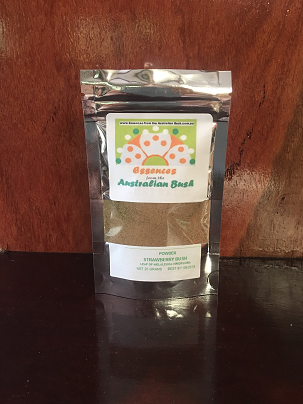
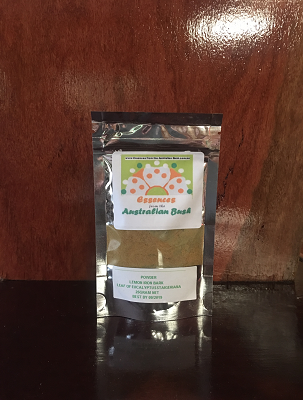
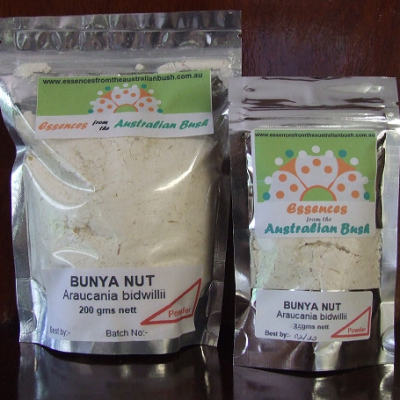
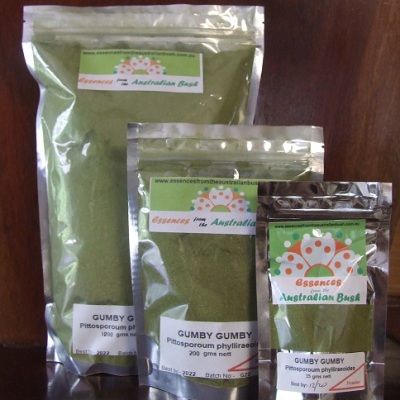
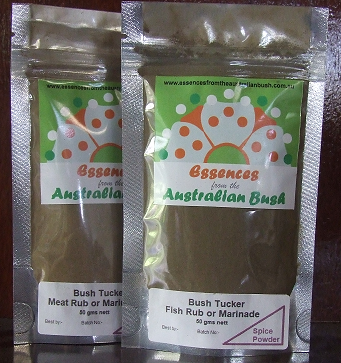
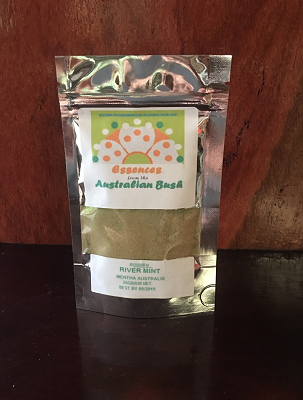
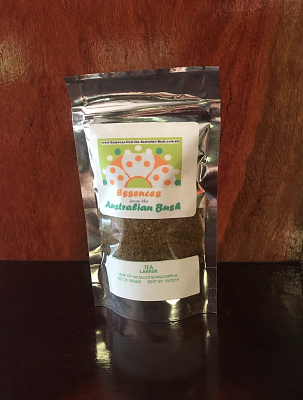
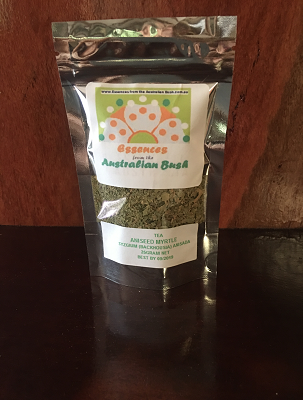
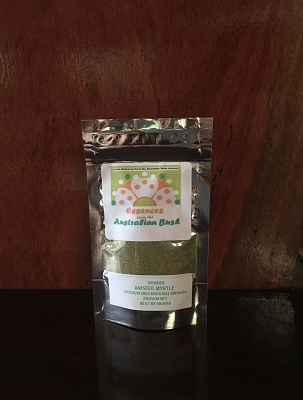
Reviews
There are no reviews yet.